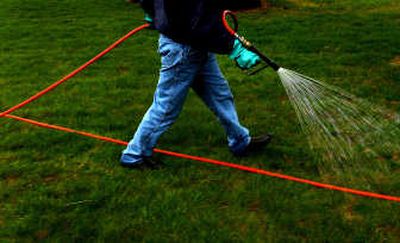Let your lawn renovation begin

What a summer. When it got hot in July, I was not looking forward to it being hot all the way to Labor Day. Not when we were trying to plan a wedding reception in the yard in mid-August. I had dreams of watering in my pajamas. But Mother Nature fooled us – again – and sent us a very comfortable August with just a bit of rain.
Just enough cooler weather and rain for the fall weed crop to pop back up, that is. No worries though, early fall is one of the best times to go after the weeds and renovate weedy lawns. You will save yourself hours of work next spring and get a greener lawn earlier.
Get healthy
The best defense against weeds is a healthy lawn. Since most weeds need sunlight to germinate, a thick stand of grass will block light from reaching the ground and cut germination rates. Start your renovation by removing weeds either by digging or treating them with the appropriate herbicide. Avoid using weed and feed products as the indiscriminate use of herbicides can cause problems for trees and shrubs, is expensive and may actually reduce the vigor of the lawn you are trying to save. Following label instructions, it will probably take several weeks for the weeds to die completely.
While you are waiting for the weeds to die, bring in an aerator and thoroughly work your entire lawn. Run the machine in one direction and then run it over the lawn at right angles to the first course. I don’t recommend thatching because the process tears out too many good grass plants.
Feed and Water
Once you have aerated the soil, apply a balanced slow release fertilizer and water it in well. These are sold as fall blends of conventional fertilizers or a good quality organic fertilizer. Research has shown that the application of fertilizer in the fall is actually the most important feeding you can give your lawn. The plants go into winter with plenty of food stored in roots and are able to draw on it when spring comes.
Because it has been dry this summer, plan on watering your lawn deeply well into October. The grass plants will go into winter well hydrated and better able to withstand the rigors of some of the sudden cold snaps with no snow cover.
Prepare for spring
Now back to the weedy areas that don’t have much grass. Once the weeds have died down, rake out the areas well and work an inch of compost into the ground. Spread new grass seed over the area, rake it in lightly and then cover the area with a mulch to hold in moisture and provide some protection when it gets cold. The ground is still warm from the summer so the seed should germinate quickly. Be sure to keep it evenly moist until the grass is several inches high. Pull any errant weeds that pop up.